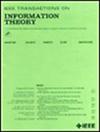Gradient Coding With Iterative Block Leverage Score Sampling
IF 2.9
3区 计算机科学
Q3 COMPUTER SCIENCE, INFORMATION SYSTEMS
引用次数: 0
Abstract
Gradient coding is a method for mitigating straggling servers in a centralized computing network that uses erasure-coding techniques to distributively carry out first-order optimization methods. Randomized numerical linear algebra uses randomization to develop improved algorithms for large-scale linear algebra computations. In this paper, we propose a method for distributed optimization that combines gradient coding and randomized numerical linear algebra. The proposed method uses a randomized梯度编码与迭代块杠杆分数采样
梯度编码是一种在集中式计算网络中减少服务器滞后的方法,它使用擦除编码技术分布式地执行一阶优化方法。随机化数值线性代数利用随机化来开发大规模线性代数计算的改进算法。在本文中,我们提出了一种结合梯度编码和随机数值线性代数的分布式优化方法。所提出的方法使用随机的$ell _{2}$子空间嵌入和梯度编码技术,将数据块分配到集中式网络的计算节点,在每次迭代时,中央服务器只需进行少量计算即可获得最陡下降更新。我们这种方法的新颖之处在于,数据是根据重要性分数(称为数据块杠杆分数)复制的,而大多数梯度编码方法则是统一复制数据块。此外,我们在每次迭代时都不需要解码步骤,避免了以往梯度编码方案的瓶颈。我们的研究表明,我们的方法可以实现有效的 $\ell _{2}$ 子空间嵌入,而且我们的近似结果可以收敛到最优解。
本文章由计算机程序翻译,如有差异,请以英文原文为准。
求助全文
约1分钟内获得全文
求助全文
来源期刊

IEEE Transactions on Information Theory
工程技术-工程:电子与电气
CiteScore
5.70
自引率
20.00%
发文量
514
审稿时长
12 months
期刊介绍:
The IEEE Transactions on Information Theory is a journal that publishes theoretical and experimental papers concerned with the transmission, processing, and utilization of information. The boundaries of acceptable subject matter are intentionally not sharply delimited. Rather, it is hoped that as the focus of research activity changes, a flexible policy will permit this Transactions to follow suit. Current appropriate topics are best reflected by recent Tables of Contents; they are summarized in the titles of editorial areas that appear on the inside front cover.
 求助内容:
求助内容: 应助结果提醒方式:
应助结果提醒方式:


